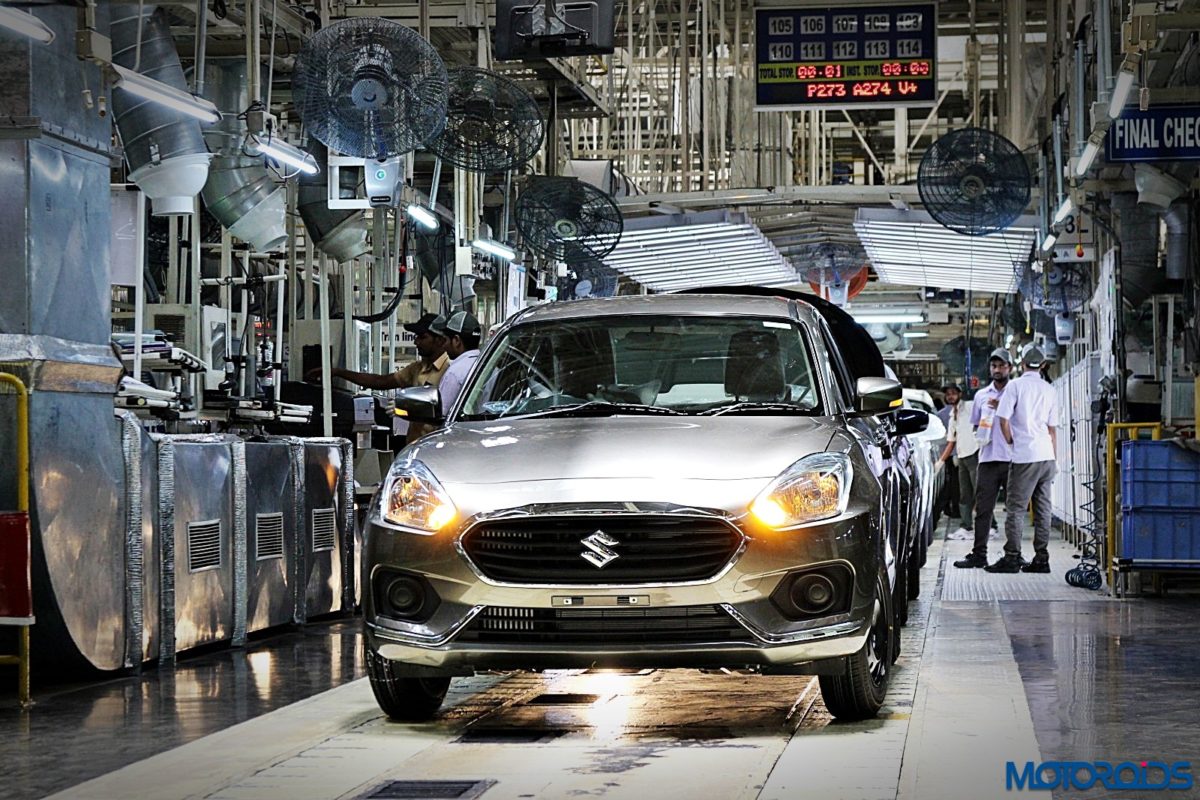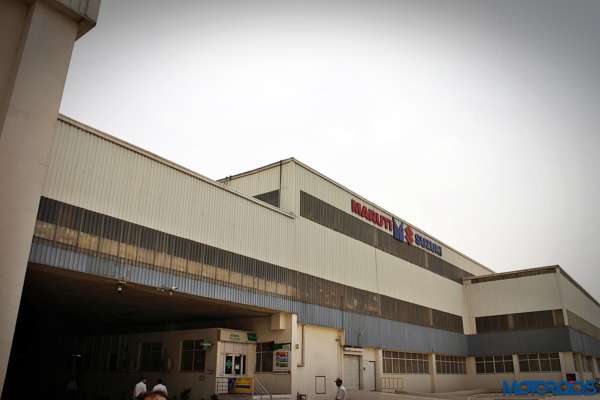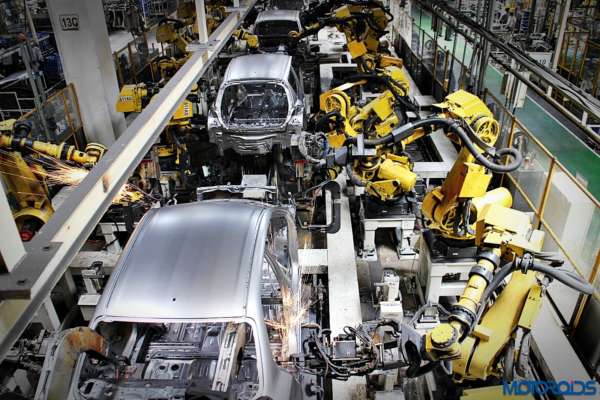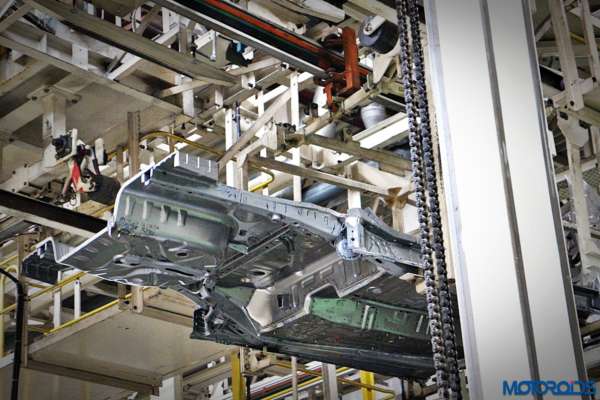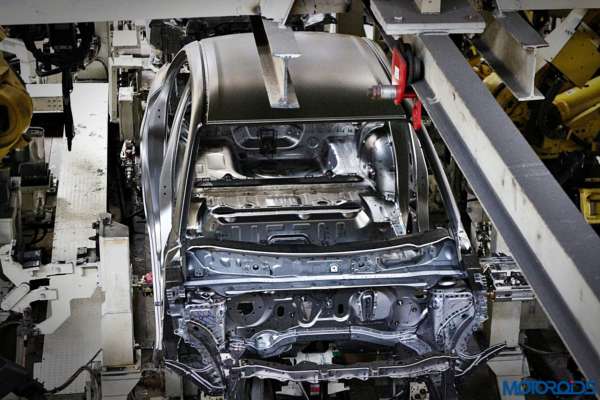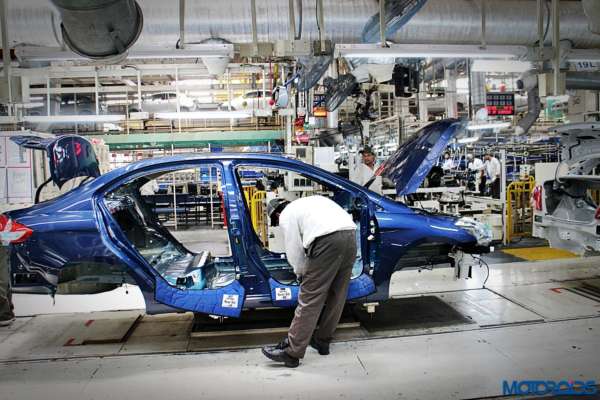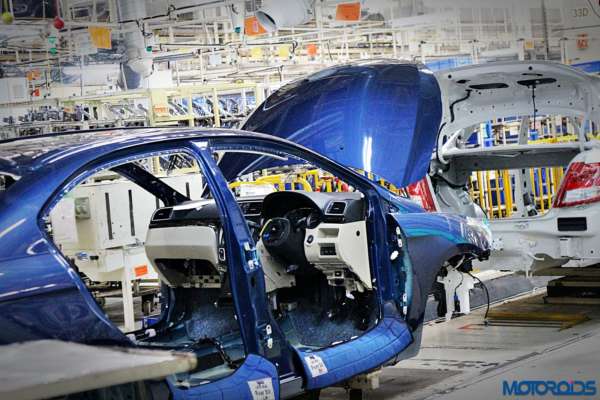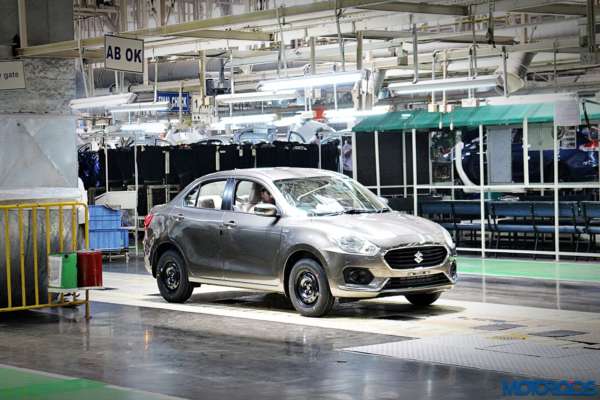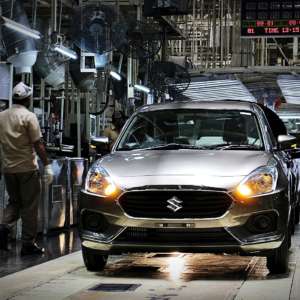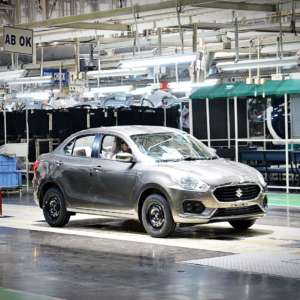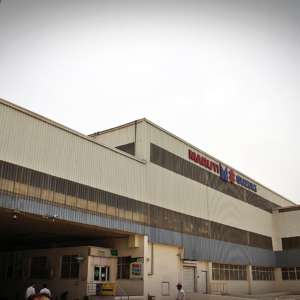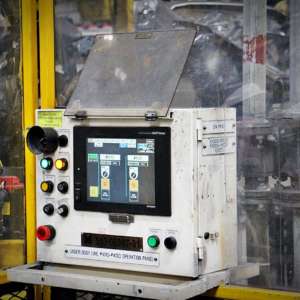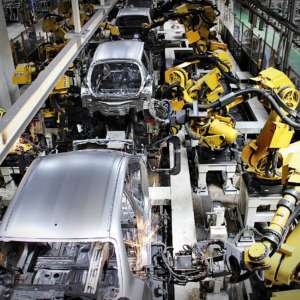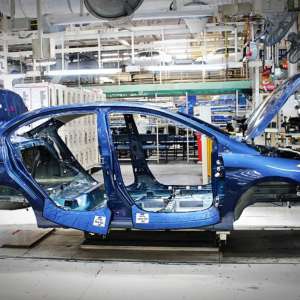Maruti Suzuki launched the Swift Dzire as its offering in the compact sedan segment, driven by the government’s excise duty cuts for sub-4 metre vehicles back in 2008. The rest, as they say, is history. Over the past 9 years, the Dzire has been a mega success for Maruti Suzuki. As you would assume, though, for a car that has more than 30,000 parts and sells ion enormous numbers, it’s a challenge to keep spinning the numbers without compromising quality on any count. The manufacturing process has to be fast, economical, efficient and glitch free – all at the same time. So how does Maruti Suzuki achieve the feat of creating cars which cater to almost 50 percent new car buyers in India, while also maintaining very high degrees of precision and reliability? We had a chance to visit Maruti Suzuki’s Manesar factory where the new Dzire is being manufactured to observe and understand the process very closely. Here is how it works.
At this point, Maruti Suzuki has two functional plants in India – the one in Gurgaon was established in 1982 and churned out the original SS80 in 1983 while the second one came up in 2006 in Manesar. I had personally seen Gurgaon facility several times back in 2005-2006 but the new plant in Manesar is really state of the art. It has a total of 1,100 robots, most of which are used for precision welding of the chassis.
These robots are all made for very specific purposes. As for workers, there are a total of 7,000 pairs of hands who work in the factory with high precision to produce these cars. These workers, along with the robots produce 3,100 cars per day – about 2.15 cars per minute. They are able to do this while maintaining 98% efficiency with less than 1.8 minutes of assembly line stoppage in a 480 min shift. If you add 2,700 cars produced in Gurgaon plant, MSIL produces one car every 10 secs.
Achieving this is no mean feat and requires a well-oiled machinery functioning like clockwork, round the clock. So there is about 10 km of running conveyor belts in this plant carrying the car body and parts as workers attach various components. The flow of the production is – Press Shop – > Weld Shop -> Paint Shop -> Assembly Shop -> Vehicle Inspection. The Press Shop and Weld Shop are mostly automated. The Press Shop presses sheets of metals into shapes which form part of the chassis and door. These pieces are then welded together in the weld shop. The Weld shop was a treat to watch with robots working on 3D and 3K guiding principal reaching out in narrow gaps to do spot welding which welds together different parts of the chassis.
Talking about the Chassis, the new Dzire is based on what Maruti Suzuki calls the ‘HEARTECT’ Platform. It uses ultra high tensile and high tensile steel which provides enhanced safety while also keeping the weight relatively light. The new Dzire also gets front airbags as standard feature which enhances the safety quotient.
Coming back to the making of the Dzire, once the body shell is painted, the doors are removed and they are assembled separately at a later point. This allows better cabin access for workers working on the body. Each component is then attached by a team of workers. We could see the entire dashboard being put in place by a robotic arm and workers putting the screws on the fix the dashboard.
Most parts are all pre-assembled and only need to be bolted onto the car body. While just seeing the cars being assembled was fascinating, what is even more interesting is the level of planning which goes in having the right assembly at the right time and right place. More than one car model is made on each assembly line and that adds to the complexity of the parts availability. The parts have to be just-in-time and properly sequenced.
Let me give you an example. Let’s say the production plan for the assembly line is in this sequence Dzire VDi, followed by the Baleno Petrol Delta followed by the Dzire LXi. Now we know that several components of these cars would be different. For example, the dashboard of the two Dzires is different due to tachometers in Petrol and Diesel Dzire are different and the complete dashboard assembly comes pre-assembled to the production line. The production planning is so detailed to the last bolt that next component the worker picks up would belong to the car they are currently assembling. They have such advanced systems in place that an alarm would be raised if a wrong part is picked. That fine grained control through use of technology eliminates any margin for error and results in a very high degree of precision and output.
We saw the cars bring built right from scratch and then pulling out of the assembled line, driven to test area and moving on the parking lot, waiting to be shipped to their waiting buyers. As an auto enthusiast, I love driving cars but looking at them being built in such large volumes was a great experience in itself. I think everyone should try and see a production line of a car to appreciate the engineering, planning and sheer hard work goes into building our dream machines.
Kudos to Maruti Suzuki for having achieved such a high degree of precision, and for taking car manufacturing to truly global standards in India. Not without reason are they country’s Number One car manufacturers.
Please let us know if you have any questions about the process of automobile manufacturing through one of our social channels, and we will try our best to have your query answered. Check out a jumbo image gallery of the Maruti Suzuki Dzire being produced at the maker’s Manesar plant below

